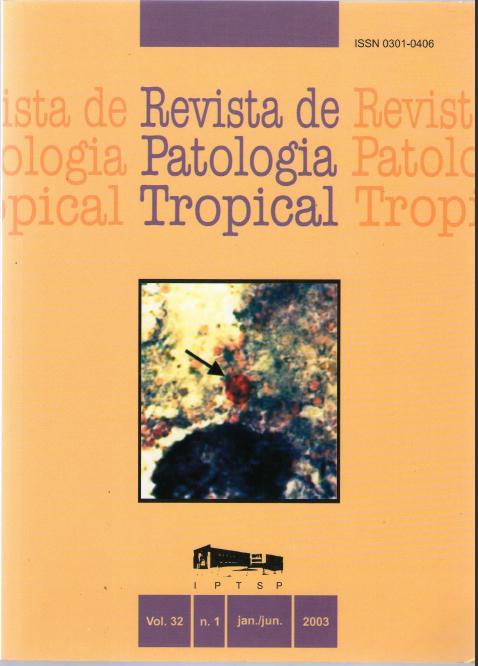ENTEROBIASIS AND OTHER INTESTINAL PARASITOSES IN CHILDREN ATTENDING EDUCATIONAL INSTITUTIONS IN UBERLÂNDIA, STATE OF MINAS GERAIS, BRAZIL
DOI:
https://doi.org/10.5216/rpt.v32i1.4354Resumo
In order to search for Enterobius vermicularis and other intestinal parasitoses, children living in a developmental center as well as those attending four day care centers and elementary schools in Uberlândia were examined by the Graham and Sedimentation techniques. Out of 187 children examined, 53 (28.3%) were infected. The parasite prevalence rates according to institutions varied from 0% to 60%. The parasites and commensals encountered and their respective prevalence rates were, Giardia duodenalis (38.3%), E. vermicularis (13.9%), Hymenolepis nana (9.6%), Ascaris lumbricoides (4.3%), Entamoeba coli (8.5%) and Entamoeba hartmanni (1.1%). Repeating the Graham technique and the examination of two homogenized stool samples by the Sedimentation method increased the sensitivity of both techniques. Children between two and seven years old presented greater prevalence rates. The rates observed in boys and giris were not different from each other. The results reinforce the relationship of prevalence of intestinal parasites and social-economical aspects, as well as reveals E. vermicularis as one of the most prevalent helminths in children attending day care centers and elementary schools in Uberlândia.Downloads
Downloads
Publicado
Como Citar
Edição
Seção
Licença
The manuscript submission must be accompanied by a letter signed by all authors stating their full name and email address, confirming that the manuscript or part of it has not been published or is under consideration for publication elsewhere, and agreeing to transfer copyright in all media and formats for Journal of Tropical Pathology.

